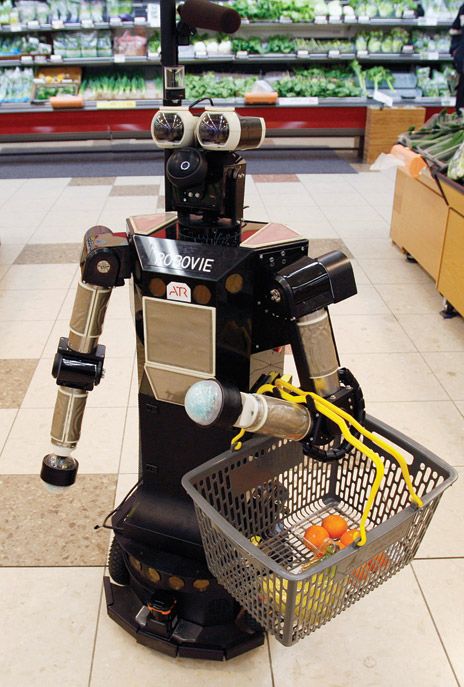A Robot in the Kitchen
Roboticists in Japan and South Korea are designing the household servants of the future
Rosie, the robot who kept house for the title family in "The Jetsons," a 1960s animated television show, has at last come alive—sort of. Before you'll see a robot slicing cucumbers in your kitchen, researchers will need to make these mechanical servants smarter. Here's how three teams are tackling this challenge.
What: Robovie-II can help customers locate and carry products at a Kyoto supermarket.
How: ATR researchers say that a stand-alone robot is not suited for many real-world tasks. A better approach is to use "ubiquitous network robot technology"—a mix of robots, sensors, and virtual robots. Says Hiroshi Ishiguro, an ATR Fellow, Robovie-II is eager to offer suggestions: "If you're making a broccoli salad, you might want to get some lettuce as well." If you know what's good for you.
What: An HRP-2 humanoid robot learns to wash dishes.
How: The researchers are using a combination of human motion-capture and video-game-style simulations to teach the robot how to handle different dishware and deal with uncertainties. "We're focusing on failure detection," says Kei Okada, a University of Tokyo professor. "So if you move a cup while the robot is trying to grasp it, the robot just recomputes its actions." That is, it won't try to grab the cup from your hands—and then vaporize you.
What: Mahru, a biped humanoid, can pop a snack into the microwave and bring it to you.
How: A human wearing a sensor suit performs tasks while a motion-tracking system records the action. The robot is programmed to reproduce the tasks while adapting to changes in the space, such as a displaced chair. "Robots that operate in human environments need to move like humans," says Bum-Jae You, head of KIST's Cognitive Robotics Center. Mahru also performs some dance moves like a pro.
Erico Guizzo is the Director of Digital Innovation at IEEE Spectrum, and cofounder of the IEEE Robots Guide, an award-winning interactive site about robotics. He oversees the operation, integration, and new feature development for all digital properties and platforms, including the Spectrum website, newsletters, CMS, editorial workflow systems, and analytics and AI tools. An IEEE Member, he is an electrical engineer by training and has a master’s degree in science writing from MIT.
